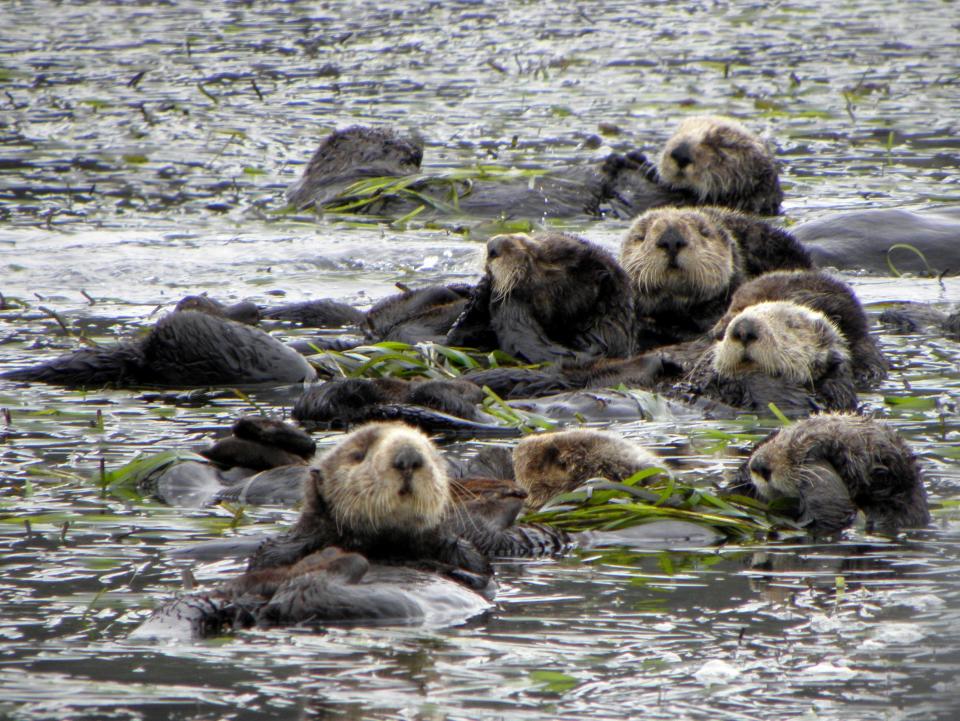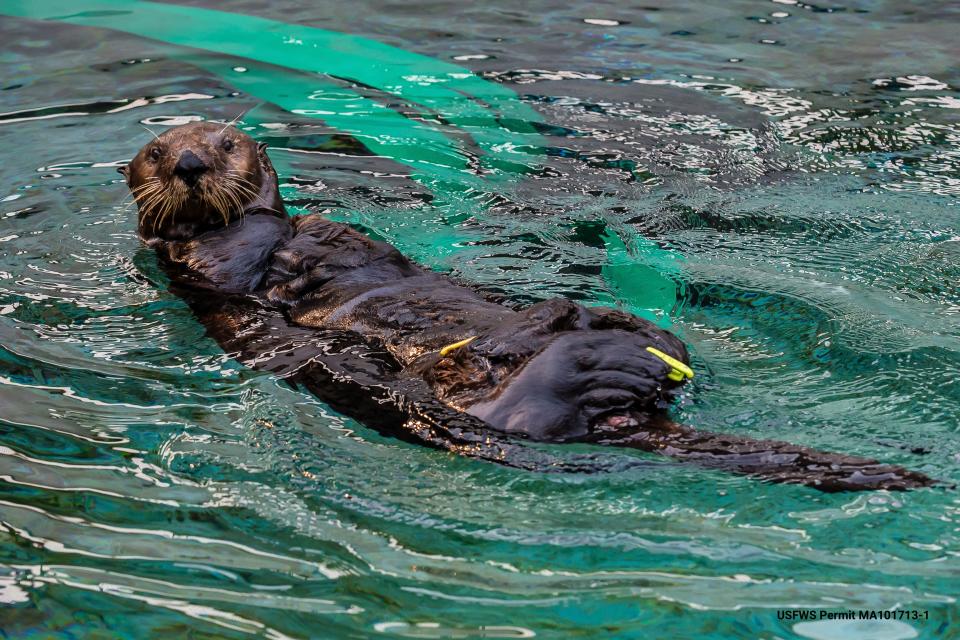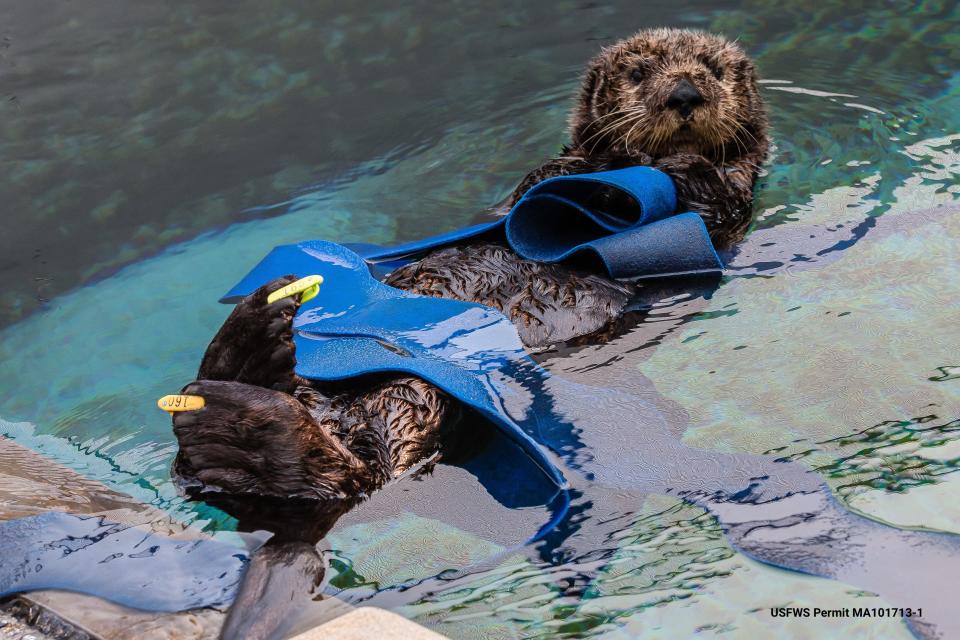Cat poop may be killing California sea otters: Toxic parasite presents 'scary new challenge'
A toxic parasite "very different from anything" experts have seen before has killed four California sea otters and they're concerned it could spread to other marine life and even humans.
Melissa Miller with the California Department of Fish and Wildlife routinely examines dead sea otters as part of a decadeslong state effort to help the recovery of the threatened species.
But when she examined one dead otter in February 2020, she immediately knew she was seeing lesions she hadn't seen before. Since then, three other dead otters have been found infected with a rare and deadly form of a common parasite found in cats, other animals and humans.
The parasites are carried in the feces of wild and domestic cats, said Devinn Marie Sinnott, a veterinary pathologist and doctoral student at the University of California, Davis.
On Wednesday, Miller and other researchers published a study in the journal Frontiers in Marine Science, hoping to alert others to the parasite. They hope other marine mammal responders and scientists will be careful when handling sea otters to avoid spreading the parasite.

Toxic parasites
Scientists have studied a common version of this parasite – Toxoplasma gondii – in sea otters for decades.
“In fact, it’s amazing how many otters are infected” with parasites, said Miller.
Toxoplasma can occur in any warm-blooded species, including humans, and has been deadly among Hawaiian monk seals, said Sinnott, a co-author.
Typically, Toxoplasma kills sea otters slowly, in a “chronic, smoldering process,” Miller said. The strain documented in the California otters causes a more severe form of toxoplasmosis that appears to kill ”very fast.”
This version – Toxoplasma gondii COUG – was named for the two mountain lions in British Columbia where it was first documented in 1995 during an investigation into a waterborne outbreak of toxoplasmosis in humans.
When Miller looked at it under a microscope, the number of parasites was “amazingly high," she said. It hits body fat really hard and causes obvious lesions that can be seen with the naked eye.
It's concerning for two reasons: the potential impacts on the population of threatened sea otters and because it could affect the health of other animals susceptible to toxoplasma infection, Sinnott said.
The parasite has never been detected in any other aquatic species, including the more than 1,000 sea otters examined over the past 24 years, Miller said.
Only one other case has been reported, in a wild pig in California's Sierra Nevada Mountains.
Why warn others?
The sea otter deaths underscore the need to study the parasite and how it spreads among animals, Miller said. “Anything that we’re finding in marine mammals that’s different and new, we want to let people know about so they can take precautions.”
“Hopefully, between all the different groups studying in this area, we can kind of let each other know if we’re seeing it in other species, or try to figure out where it’s coming from,” Miller said. “We want to get the word out.”
They hope to encourage others to:
Watch for the lesions.
Take extra precautions during necropsies to avoid becoming infected.
Freeze infected animals before disposing of them, to kill the parasites.
Reach out to others to coordinate their investigation.

A potential link to cat poop
All four of the sea otters died during periods of increased rainfall-driven runoff.
That leaves researchers concerned about a potential connection to contaminated stormwater runoff after heavy rains.
Toxoplasma is hosted in wild and domestic cats and found in their feces, Sinnott said.
Surface water streams and runoff can help carry the egg form of the parasite from inland areas where cats are pooping and shedding the parasite, into other water bodies such as streams, and freshwater runoff into the ocean, she said. “So it seems that abundant rainfall leads to increased surface water and to carriage of the egg stage of the parasite into the ocean, where sea otters can become infected.”

A sentinel species
"Southern sea otters serve as a sentinel species for ocean health and already face many different threats to the recovery of their population," says Dr. Cara Field, medical director at The Marine Mammal Center. "The new strain of Toxoplasma identified in this study presents a scary new challenge for this threatened species. That's why funding for collaborative research like this is so important."
Dinah Voyles Pulver covers climate and environment issues for USA TODAY. She can be reached at dpulver@gannett.com or at @dinahvp on Twitter.

This article originally appeared on USA TODAY: Cat poop may be killing California sea otters: toxic parasite deaths

